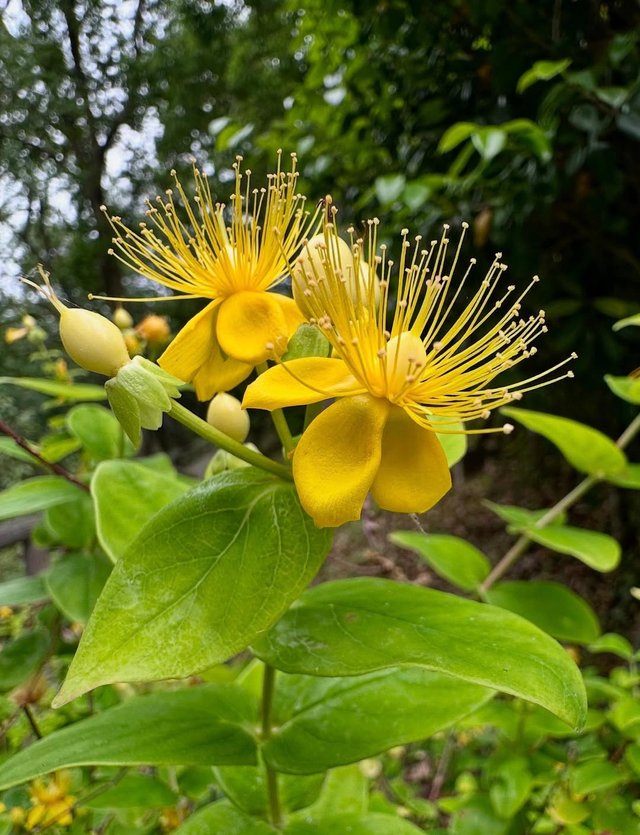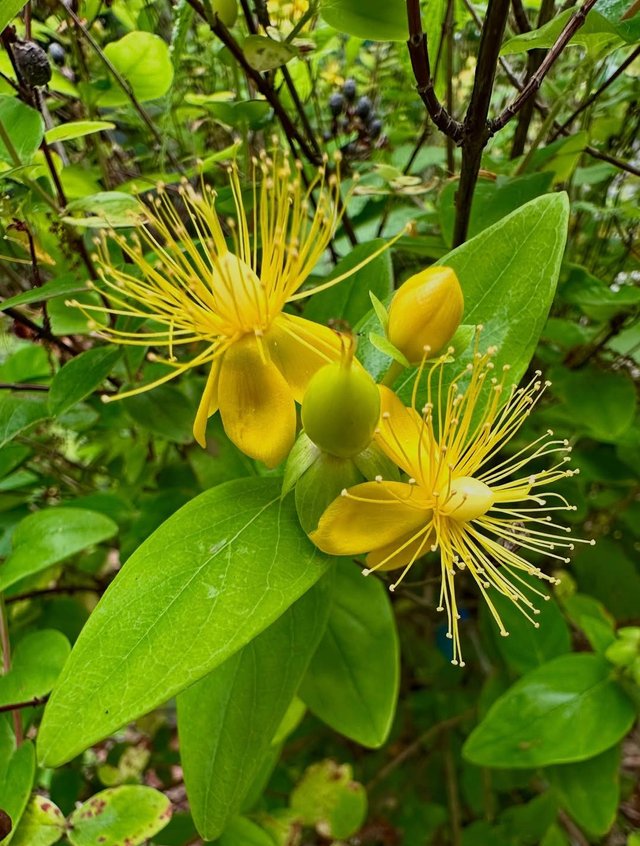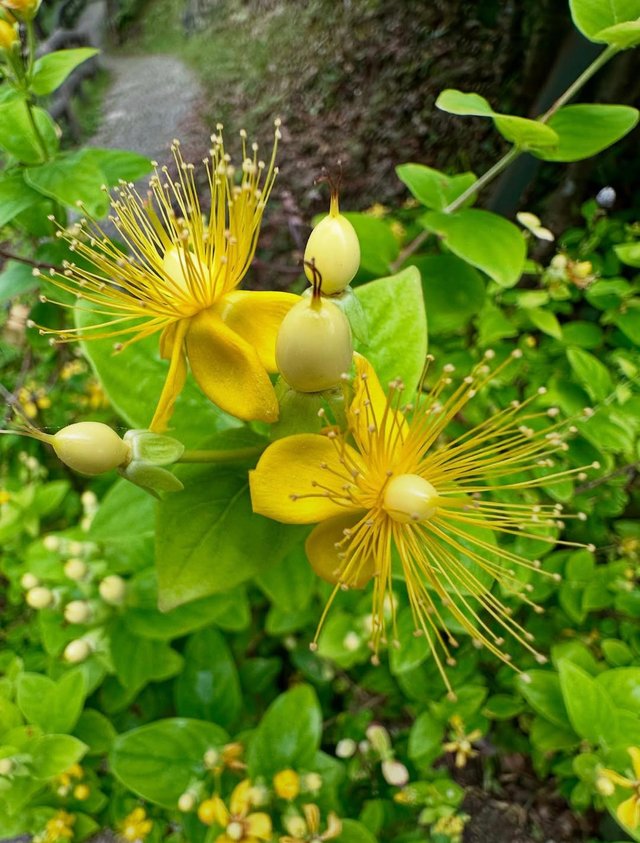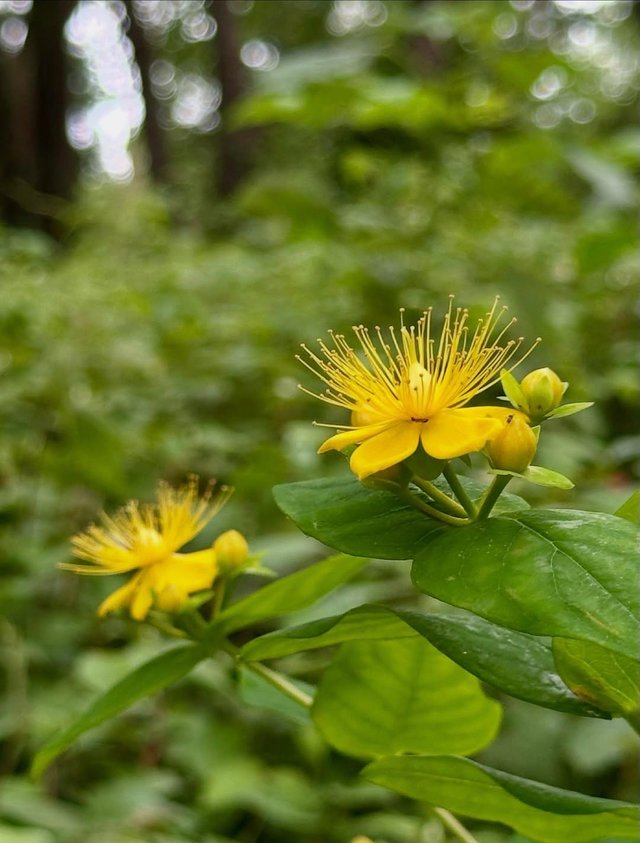Tutsan Flower
Tutsan Flower is a plant steeped in botanical intrigue, historical significance, and medicinal lore. Though often overshadowed by its more famous cousin Hypericum perforatum Tutsan stands out in its own right as a resilient, beautiful, and multifaceted species. Native to parts of Europe, western Asia, and North Africa, Tutsan has been naturalized in other parts of the world and has earned admiration for both its ornamental appeal and its reputed healing properties.
Tutsan is a semi-evergreen shrub that typically grows up to 3 feet (1 meter) tall. It features oval, dark green leaves that are often tinged with a bluish hue and emit a mild aroma when crushed. The plant produces bright yellow flowers, usually with five petals and a spray of bushy stamens in the center, creating a starburst-like appearance.After flowering, it develops striking berries that shift in color—from green to red and finally to a deep purplish-black as they mature. These berries are not considered edible but are one of the plant’s most distinctive features, often used in floral arrangements.
This plant thrives in hedgerows, woodland margins, and shaded gardens. Its versatility makes it a popular choice for natural landscaping and wildlife gardens.Historically, Tutsan has been used in folk medicine, though less frequently than Hypericum perforatum. The name Tutsan derives from the French toute saine meaning all-heal reflecting its once-revered healing powers.Beyond its historical and medicinal significance, Tutsan is a plant of quiet beauty. Its long-lasting berries and bright blooms make it a staple in ornamental gardening. The contrast between its vibrant yellow flowers and deep, dark berries adds a dramatic touch to borders, hedges, and natural gardens.It’s also an excellent choice for pollinator-friendly gardens, as bees and other insects are drawn to its flowers.




